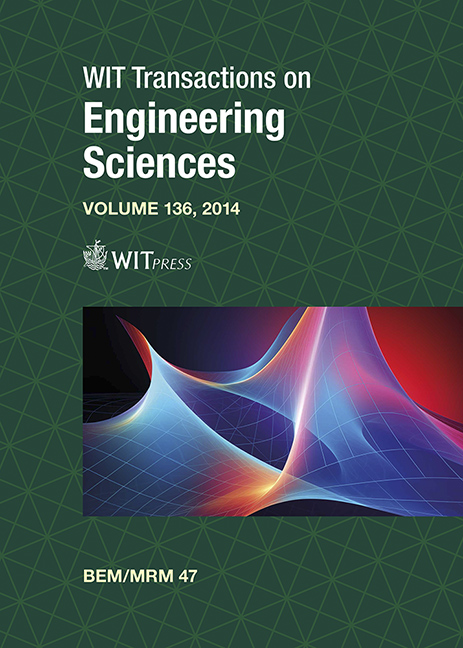MULTISCALE MODELLING OF CONCRETE PLATES USING THE BOUNDARY ELEMENT METHOD
Price
Free (open access)
Transaction
Volume
136
Pages
12
Page Range
147 - 158
Published
2024
Paper DOI
10.2495/BE470121
Copyright
Author(s)
CALEB G. PITALUGA, GABRIELA R. FERNANDES
Abstract
In this paper we analyse a concrete plate by using a multi-scale modelling technique. The boundary element nonlinear formulation for the two-dimensional problem is used to model the macrocontinuum while the concrete microstructure is modelled by a boundary element nonlinear formulation based on the concept of representative volume element (RVE) and considering it as a zoned plate where each sub-region represents a RVE phase. In both formulations the consistent tangent operator is used to achieve the convergence of the iterative procedures. The equilibrium problem of the plate is solved in terms of in-plane strains while for the RVE equilibrium problem it is done in terms of displacement fluctuations. To model the concrete microstructure, the Mohr–Coulomb criterion is used to govern the mechanical behaviour of the mortar matrix, while the aggregates are considered elastics. Besides, some voids are also defined in the mortar matrix to model the concrete porosity and the fracture process along the interfaces between matrix and aggregates are modelled by defining addition cohesive-contact finite elements superposed to the interface elements. To validate the presented model, the numerical results are compared to experimental ones.
Keywords
multi-scale modelling, homogenisation, RVE, boundary elements, 2D problem





